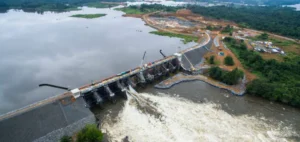Minesto commissions Dragon 4, its second tidal power plant. Located in the Faroe Islands, this plant is part of a larger project aiming at 100% renewable energy by 2030.
Second tidal power plant for Minesto
Minesto, with this new plant, will supply the municipality of Vestmanna in the Faroe Islands. With an installed capacity of 20 to 40 MW, it will provide, like the first plant, ready-to-use energy. The company, specializing in marine energy technology, a tidal kite technology on the grid.
With this project, Minesto sets itself apart from other tidal plants by its simplicity. Dragon 4 can be easily deployed without the need for a lot of manpower. Thus, a small team can assemble and launch the kite in a few hours, in virtually any tidal condition.
A promising energy plan
This Dragon 4 tidal power plant is the second one launched by Minesto in the Faroe Islands. The first one was born a few months earlier, in May 2022. They are part of a larger plan that includes a total of four sites that would together supply 40% of the country’s energy.
The important observation is the three-month gap between these two installations, which is explained by the configuration tests performed.
Bernt Erik Westre, Director of New Technologies, states:
“At first glance, the two “Dragon 4″ kites look identical, although a few improvements were implemented as part of the product development process. There are only three months between the installation of these two units, and it is gratifying to note that this short period of time is sufficient to evaluate, decide, install and test the upgrades before delivery. It also underscores the ease of manufacturing of our technology.”
Finally, this speed also illustrates the potential of Minesto’s tidal plants.






















